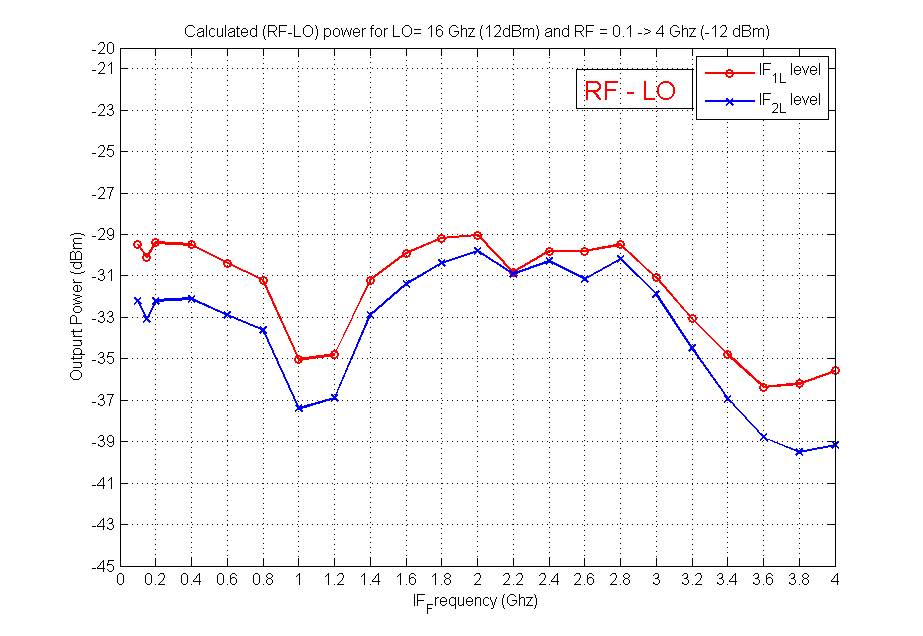what doea mixer's IF bandwidth means?
I was wondering, that what does the IF-Bandwidth of a mixer means. what is it important for and thing do we get to know from it...
Hi Lucky,
Could you elaborate your question ? What is the background of your question ?
In receiver like spectrum analyzer, IF Bandwidth is also known as Resolution bandwidth (RBW). It is a kind of filter which will filter the IF signal obtained after down conversion of RF signal by using mixer and LO signal.
Lower the IF bandwidth, better will be the resolution. So detection of signal will be better.

Attached image will give you more idea on need of IF Bandwidth.
Cheers,
Antonio
well, my point is exactly related to performance of a mixer... let's say I have been given this plot about the mixer's IF bandwidth...

that's the output of and I/Q mixer... what information does this plot gives specially about the mixer.
or in other words. what's the relationship of this bandwidth with the operating Frequency range of a mixer. How can we deter the frequency range of a mixer..
IF Bandwidth of a Mixer is determined by internal selectivity circuits and if there is output tank circuit.
Ideally, an active mixer doesn't have any bandwidth restriction but in practice mathcing circuits,active device constraints and internal/external selectivity circuits define IF/RF bandwidth of the mixer both.
IF bandwidth refers to the frequency range where the mixer's IF works "well".
For example, if you have a mixer whose RF and LO ports work from 2 to 10 GHz, then the highest frequency that the IF will work at normally would be a little less than 2 GHz. This is because structures inside the mixer prevent the RF or LO from leaking out of the IF port. Similarly, there may be some internal structure (series capacitance, etc) that prevents the mixer from working down to 0 Hz. So the bandwidth of such a mixer might be 10 Mhz to 1.8 Ghz, for example.
Actually I would like to find the Bandwidth of this mixer
http://www.hittite.com/content/docum.../hmc144lc4.pdf
Availble devices are signal generator upto 40 Ghz, Spectrum Analyzer upto 27 Ghz and also a Network Analyzer...
the mixer is for 6-20 Ghz, and it's IF bandwidth is DC- 3Ghz, how can i prove this with the above given devieces...
Read these documents related to mixer measurements using a Network Analyzer:
http://www.rohde-schwarz.co.jp/techn...nts_ZVA-K4.pdf
http://cp.literature.agilent.com/lit.../5956-4362.pdf
http://literature.agilent.com/litweb/pdf/5966-3318E.pdf
Hello,Antonio,
by your viewpoint, the more narrow IF bandwifth, the better the receiver performance is ?
But many receiver have the more and more wide IF bandwidth , for example ,superheterodyne receiver.
my question is the least IF bandwidth with conditionality of the mixer LO frequency step(?). if LO frequency least step is 10kHz, do how do you realize 1kHz IF bandwidth?
thanks.
weour
decide a fix LO like 14 GHz, Sweep RF from 14-1 8GHz with SG, measure power level on SA from DC to 4 GHz. This will give you infi about mixer If performance upto 4 GHz for 14 GHz LO and low side LO injection.
